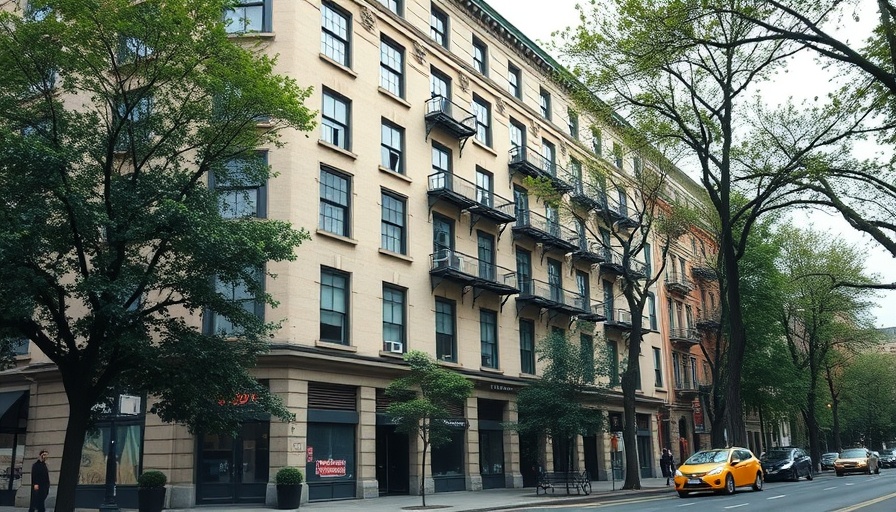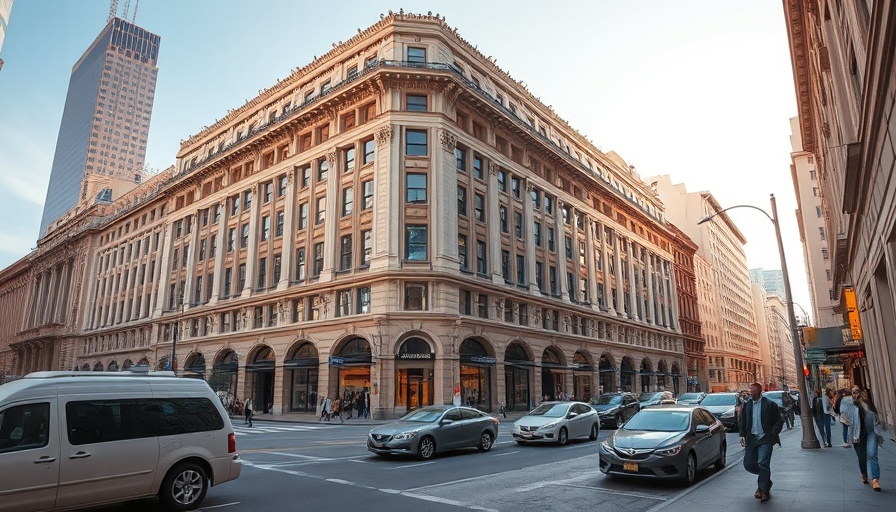
Frontier Tower: A New Chapter for Urban Living
In an ambitious move to redefine living and working spaces in San Francisco, the founders of Frontier Tower have made a significant investment in a former dormitory of the Academy of Art University, purchasing it for $13.1 million. This acquisition comes at a pivotal moment for the area, as urban spaces across the nation grapple with economic shifts, demand for innovation, and the rise of hybrid work models.
Transforming Historic Spaces into Innovative Communities
Not only does the Frontier Tower represent a financial investment, but it also symbolizes a broader shift towards integrated living systems. The building is part of a wave of similar projects in San Francisco aimed at retrofitting outdated structures to meet modern housing needs and foster community.
A newly proposed concept branded as a ‘vertical village’ aims to blend co-living, high-tech governance, and entrepreneurship. According to SF Bizjournals, this future urban oasis will feature designated areas for different technological fields, from biotech to AI, enhancing collaboration among innovators.
Snap-Shots of Urban Revival
Frontier Tower is part of a larger effort to reinvigorate the Mid-Market district, an area plagued by economic downturns and social challenges. The founders envision a space filled with coworking lounges, collaborative labs, and even a music studio that leverages the rich cultural backdrop of its surroundings. The structure is expected to facilitate spontaneous interactions and networking opportunities, positioning itself as the heart of tech-driven creativity.
Similarly, another project transforming a historic building into a modern co-living space at 995 Market Street highlights this increasing trend. Here, corporate sponsors and community-led initiatives intertwine to experiment with and encourage communal living concepts.
Catalysts of Change: The Role of Community
Engaging with both the positive and negative aspects of urban living, Frontier Tower's plans signal a strong commitment to community. The founders emphasize accessible collaboration environments, aiming to attract individuals and families invested in tech-driven self-sustainability. As co-founder Christian Nagel puts it, “This is a village, and children belong in a village,” pointing to a family-centric approach in tech development.
The project plans to address local issues, promising to help improve the surrounding community by engaging with social impacts locally, such as the ongoing fentanyl crisis highlighted during a recent town hall meeting. “Market Street is coming back to life,” noted Captain Kevin Knoble, urging empathy for those affected.
Challenges Ahead: Balancing Dream and Reality
Despite these visionary ideals, the challenges are significant. Filling the remaining space in the building with viable tenants while ensuring that rents remain approachable will be a balancing act. Currently, Frontier Tower hosts about 200 members but has the potential for significantly more as excitement builds.
Part of the road to viability lies in collaborating with fledgling startups and established tech firms alike. Innovative membership models ranging from communal working spaces to specialized laboratories are key components of their strategy.
Creating Value Through Innovation
As the landscape of urban living continues to shift, projects like Frontier Tower showcase the potential of reimagined spaces to foster community, collaboration, and economic resurrection. If successful, they may well set a precedent for how cities adapt to changing societal needs and technological advancements, making urban living spaces more versatile and supportive.
For those interested in the cutting-edge transformations happening in San Francisco, keeping an eye on the developments at Frontier Tower is a must. As innovative projects blossom, they not only promise to offer new living contexts but also contribute to revitalizing the urban fabric of the city.
 Add Row
Add Row  Add
Add 




Write A Comment